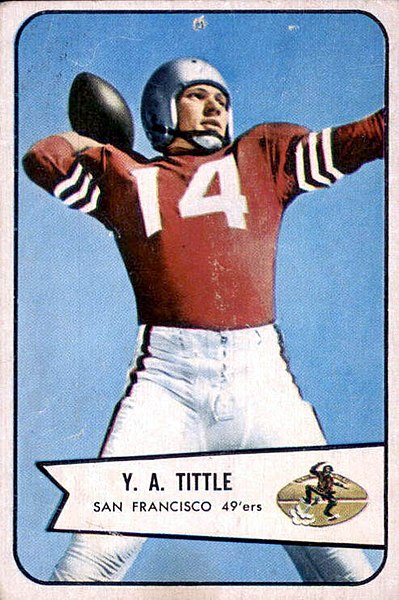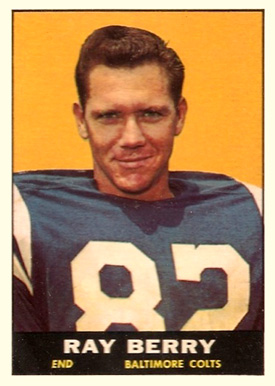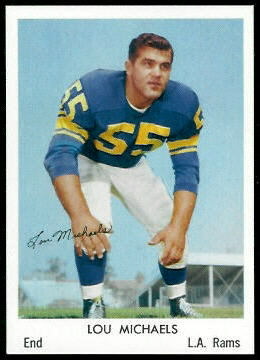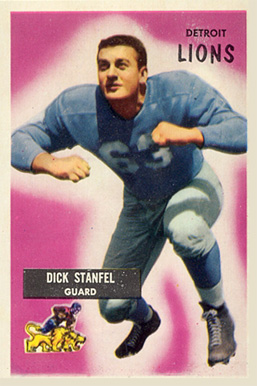As time passes, many of the players who once dominated the gridiron have grown older, yet their contributions to the game remain legendary. The oldest living football players are a testament to the rich history of the NFL and the evolving nature of the sport. These athletes not only shaped the game during their prime, but their lasting legacies continue to inspire new generations of fans and players alike. From groundbreaking quarterbacks to hard-hitting defenders, each player brings a unique story of perseverance, skill, and dedication. Here are 16 of the oldest living football players, each of whom has left an indelible mark on the sport.
Tommy Thompson (Born 1927)

Tommy Thompson, a former quarterback for the Philadelphia Eagles, was born in 1927, making him one of the oldest living professional football players. Known for his leadership on the field, Thompson played a critical role in helping the Eagles secure two NFL championships in 1948 and 1949. His career spanned from 1941 to 1950, though he missed several years due to military service during World War II. Thompson’s resilience and adaptability set him apart, especially in an era dominated by hard-nosed, run-heavy football. After football, he transitioned into coaching, imparting his wisdom to younger players. Despite the passage of time, his contribution to the Eagles’ storied history is still remembered by die-hard fans. His legacy endures in NFL lore as one of the pioneering quarterbacks of his era.
Charley Trippi (Born 1922)

Charley Trippi, a Pro Football Hall of Famer, is renowned for his versatility on the field. Born in 1922, Trippi played for the Chicago Cardinals from 1947 to 1955, excelling as a halfback, quarterback, and even on defense. Trippi’s unique ability to play multiple positions made him a rare asset, and his performance in the Cardinals’ 1947 NFL Championship victory is still remembered as one of his finest. At the age of 29, he helped lead the team to victory, showcasing his athletic prowess and sharp football IQ. Even after retirement, Trippi stayed involved with the Cardinals, often attending team functions and celebrating the team’s rich history. His contribution to the game is etched in NFL history, and he is often cited as one of the last true “all-around” players. Today, Charley Trippi remains one of the few players from the 1940s era still living, a true testament to his longevity.
Joe Campanella (Born 1927)

Joe Campanella was born in 1927 and played as an offensive guard in the NFL during the early 1950s. His brief but impactful career with the Baltimore Colts spanned from 1950 to 1953. Campanella was known for his tenacity on the offensive line, regularly holding his ground against some of the league’s toughest defensive players. He also had a keen understanding of offensive strategies, helping his teams push forward in crucial situations. Although his career was cut short due to injuries, he remains a respected figure among football historians. Off the field, Campanella made a successful transition into business, leveraging the discipline he learned in football. His career, though not the longest, left a mark on the league during a pivotal time in its development.
Buddy Parker (Born 1913)

Buddy Parker, a coach rather than a player during his NFL years, began his football journey as a fullback in the 1930s. Born in 1913, Parker played for the Detroit Lions and Chicago Cardinals before transitioning to coaching. It was as head coach of the Detroit Lions in the 1950s that Parker truly left his mark, leading the team to two NFL championships. Parker was known for his strong-willed, defensive-first mindset, which was essential during an era of grinding, physical football. At the age of 40, he had already established himself as a leading football strategist. Even after his coaching days, Parker stayed connected to the game, often attending Lions’ alumni events. His influence on coaching philosophy remains evident even in today’s NFL.
Cloyce Box (Born 1923)

Cloyce Box, born in 1923, played wide receiver for the Detroit Lions during the 1950s. Known for his impressive size and strength, Box revolutionized the receiver position during his time in the league. His breakout season came in 1952 when he recorded an impressive 924 receiving yards and 15 touchdowns, helping the Lions to secure an NFL championship. At 29 years old, Box was in his prime, dominating defensive backs with his physicality and catching ability. His efforts earned him All-Pro honors and cemented his place in the Lions’ history. After retiring, Box had a successful career as a businessman and philanthropist. Even today, his influence on the wide receiver position remains significant.
Y.A. Tittle (Born 1926)

Y.A. Tittle, born in 1926, became one of the most legendary quarterbacks in NFL history, despite starting his career in the All-America Football Conference (AAFC). He played for the Baltimore Colts, San Francisco 49ers, and New York Giants over a span of 17 seasons, revolutionizing the passing game in the process. Tittle’s best years came in the 1960s when, at 37, he led the Giants to three consecutive NFL championship games. Known for his accuracy and leadership, Tittle was a four-time MVP and became the first player to throw for 30 or more touchdowns in consecutive seasons. After retirement, he remained active in football as a businessman and consultant. His career exemplifies perseverance, as he played at a high level well into his late 30s.
Dub Jones (Born 1924)

Dub Jones, born in 1924, was a versatile offensive star for the Cleveland Browns in the 1940s and 1950s. Playing primarily as a halfback, Jones contributed to several Browns championships during their dominant era under coach Paul Brown. Known for his speed and elusiveness, Jones famously scored six touchdowns in a single game in 1951, a feat that remains tied for the NFL record. His ability to play multiple positions made him invaluable to the Browns’ innovative offense. At 27, he was in his prime, helping the Browns to continue their dominance in both the AAFC and NFL. Even after his retirement, Jones stayed involved in football as a coach and scout. His versatility on the field left a lasting impression on the Browns’ storied history.
Ed Sprinkle (Born 1923)

Ed Sprinkle, born in 1923, is often referred to as the “meanest man in football,” a title earned through his aggressive play as a defensive end and linebacker for the Chicago Bears. Sprinkle played from 1944 to 1955, becoming known for his hard hits and tenacious defense. At his peak, Sprinkle helped the Bears win the 1946 NFL championship, showcasing his ability to dominate on the defensive line. Despite his tough reputation, Sprinkle was highly respected by his teammates and coaches for his work ethic and leadership. After football, Sprinkle remained active in various businesses and community efforts in Chicago. His contributions to the Bears’ defensive tradition are still celebrated today, particularly as one of the early enforcers in the league.
Raymond Berry (Born 1933)

Raymond Berry, born in 1933, was a Hall of Fame wide receiver who played the majority of his career with the Baltimore Colts. Berry became known for his precision, route-running, and chemistry with legendary quarterback Johnny Unitas. At the age of 25, Berry’s peak came during the 1958 NFL Championship Game, often referred to as “The Greatest Game Ever Played,” where he caught 12 passes for 178 yards and a touchdown, leading the Colts to victory. His meticulous approach to preparation, studying defenses, and practicing tirelessly made him one of the most respected receivers of his era. Even after retiring, Berry continued to influence the game, first as a coach and later as an advisor. His commitment to detail and discipline helped define modern receiving techniques.
Gino Marchetti (Born 1926)

Gino Marchetti, born in 1926, is often regarded as one of the greatest defensive ends in NFL history. Playing for the Baltimore Colts from 1952 to 1966, Marchetti was known for his relentless pursuit of quarterbacks and his ability to disrupt opposing offenses. His dominance helped the Colts win two NFL championships, and he was named to the Pro Bowl 11 times during his career. Even as he aged, Marchetti’s intensity never wavered, and he continued to perform at an elite level well into his 30s. His career culminated in a Hall of Fame induction, solidifying his legacy as a defensive force. After football, he owned a successful business, but his love for the game never waned. His impact on defensive play remains a model for defensive linemen today.
Lou Michaels (Born 1935)

Lou Michaels, born in 1935, was a versatile lineman and placekicker who played for multiple teams, including the Pittsburgh Steelers and Baltimore Colts, from 1958 to 1971. Standing out as both an offensive and defensive lineman early in his career, Michaels eventually made his mark as a kicker, leading the Colts in scoring during the late 1960s. He was known for his powerful leg and accuracy, particularly during pressure situations. Michaels was a key contributor to the Colts’ 1968 NFL Championship and their appearance in Super Bowl III. At 34, he was still a reliable force, despite the physical demands of playing on both sides of the ball earlier in his career. Post-retirement, he worked in business and occasionally appeared in media as a football analyst. His ability to succeed in multiple roles made him one of the more unique players of his era.
Don Maynard (Born 1935)

Born in 1935, Don Maynard was a Hall of Fame wide receiver most famous for his time with the New York Jets. As Joe Namath’s primary target, Maynard became one of the most prolific receivers of the 1960s and early 1970s, known for his deep routes and soft hands. His career highlight came in 1968 when, at 33, he helped the Jets win Super Bowl III, catching passes that would become crucial in one of the biggest upsets in NFL history. Maynard finished his career with over 11,000 receiving yards, making him one of the top receivers of his era. His longevity in the game, playing into his late 30s, was a testament to his skill and preparation. After retiring, Maynard quietly moved away from the limelight but remained a beloved figure in Jets’ history. His jersey number, 13, has since become iconic in New York football lore.
Paul Hornung (Born 1935)

Paul Hornung, known as “The Golden Boy,” was born in 1935 and is widely considered one of the most versatile and talented players in NFL history. Playing for the Green Bay Packers from 1957 to 1966, Hornung could play multiple positions, including halfback, quarterback, and kicker, a rarity in modern football. He won the NFL MVP award in 1961 at the age of 26, leading the league in scoring that year as he guided the Packers to an NFL championship. Hornung was also instrumental in the Packers’ 1961 and 1962 title wins, known for his clutch performances in big games. Off the field, Hornung was a charismatic figure, often in the spotlight for his personality as much as his play. After football, he became a broadcaster and continued to be involved in the sport through various ventures. His legacy is that of one of the most dynamic players to ever grace the gridiron.
Dick Stanfel (Born 1927)

Dick Stanfel, born in 1927, was one of the best offensive linemen of his time, playing for the Detroit Lions and Washington Redskins in the 1950s. Stanfel helped the Lions win two NFL championships in 1952 and 1953, earning a reputation for his fierce blocking and leadership on the offensive line. Even as he aged, Stanfel maintained his high level of play, with his best season coming in 1956 when he was named first-team All-Pro. At 29, he was still at the top of his game, providing protection for quarterbacks and paving the way for running backs. After his playing days, Stanfel transitioned into coaching, where he spent over 30 years in the NFL, eventually being inducted into the Pro Football Hall of Fame. His quiet yet impactful presence on and off the field left a lasting legacy in the sport.
Joe Schmidt (Born 1932)

Joe Schmidt, born in 1932, was a Hall of Fame linebacker for the Detroit Lions from 1953 to 1965. Schmidt was a leader on the Lions’ defense, known for his instinctive play and ability to call defensive signals on the field. His intelligence and toughness made him one of the top defensive players of his generation. At 30, Schmidt was still at the peak of his powers, helping the Lions remain a competitive team in the NFL. He was named to 10 Pro Bowls and helped the Lions win two NFL championships. After retiring as a player, Schmidt transitioned to coaching, even serving as the head coach of the Lions for several seasons. His leadership, both as a player and coach, cemented his legacy as one of the all-time greats in Detroit sports history.
Frank Gifford (Born 1930)

Frank Gifford, born in 1930, was one of the most versatile and celebrated players in NFL history. Gifford played for the New York Giants from 1952 to 1964, excelling as a halfback, wide receiver, and defensive back. At the age of 28, Gifford won the NFL MVP award in 1956, leading the Giants to the NFL championship that year. His versatility on offense made him one of the most difficult players to defend, as he could run, catch, and even throw the ball with precision. Gifford’s career was temporarily derailed by a severe injury in 1960, but he made a remarkable comeback and continued playing for several more years. After retiring from football, Gifford became a beloved broadcaster, spending decades as a commentator on “Monday Night Football.” His influence on the game, both on and off the field, is still felt today.
This article originally appeared on Rarest.org.
More From Rarest.Org
Retro advertising memorabilia is not only a window into the past but also a treasure trove for collectors. From iconic brand signs to old promotional items, these pieces have gained impressive value over time. Read more.
The Earth is home to a wide variety of plant species, some of which have thrived for millions of years. However, many ancient plants are now on the brink of extinction due to habitat destruction, climate change, and human interference. Read more.



